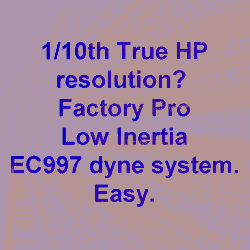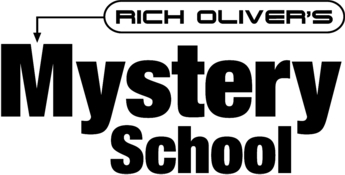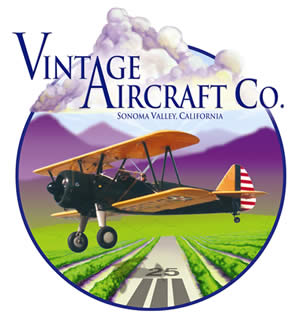|
1.
Digital systems 4 gas systems are not affected by leaded race fuels.
Digital systems do not use "wideband lambda o2 sensors" - We use
a completely different type of o2 sensor - It's only $150 to replace,
lasts more than a year and is what EPA uses in all their test equipment
for o2 measurements -
EPA does NOT use "wideband o2 sensors" to test..
Compare to $200 to $400 for fragile, wideband o2 sensor.
O2 sensor and a/f ratio + lead = potentially big
expense and wandering af readings
2. Digital systems are not permanently affected by liquid water.
Liquid water kills wideband o2 sensors - instantly.
O2 sensor and a/f ratio + water = big expense
3. Digital systems are not affected by leaded fuels.
One USA race team has to replace their wideband o2 sensors every
two weeks due to lead fouling.
Digital 4 gas EGA systems - don't care about the lead in race fuels or aviation
fuels.
O2 sensor and a/f ratio = no leaded fuels allowed
Factory Pro method = lead has no effect
4.
Digital systems o2 sensor generally lasts over a year with multibike,
daily use.
(ours is used that much!)
5. Digital systems CO, HC and CO2 mass spectrometer
equipment rarely fails in use without warning.
O2 sensor and a/f ratio = no information
and no warning -
Factory Pro method = constant 4 gas zeroing ability
6. Digital systems use CO% as a much more reliable and consistent indicator
of mixture strength.
If 5% CO made best power at some rpm and throttle position, you
could also tune all other throttle positions and rpms and even idle
to 5% and you'd have a nice, smooth running engine.
If you used an 02 sensor and tuned to the magic 13.1:1 AF Ratio at full throttle
AND at part throttle and at cruise and idle - it would commonly be too
rich at cruise and part throttle and the customer, if they speak up,
will not be happy with cruise. Especially common with HD's and big cruisers
that spend a lot of time at part throttle.
O2 sensor and a/f ratio = changing af target throughout the rpm and
throttle band and that's why a good tuner, using a wideband o2 sensor
only, has to spend hours to fiddle with "target" af ratio values to
get something that runs "ok".... hours of fiddling.... did I mention.....
"hours of fiddling" vs. an hour of manual tuning?
CO% = changing target CO%, maybe as much as a whole 1 %..... Less time
tuning - more accuracy - happier customers.
Better tuning and more profit.
7. Digital systems use HC as an indicator of engine efficiency.
Lower unburned hydrocarbon ppm (parts per million) in exhaust,
when finished tuning to Best Power indicates good overall
state of engine health - you'd even see that large bore engines, at
200 to 300 ppm, are cleaner burning than small bore engines, usually
600 to 800 ppm). That's due to increase boundary area.
O2 sensor and a/f ratio = no information.....
8. Digital systems use HC and CO2 to show "over advanced" ignition timing.
Generally, after you finished fuel tuning, you'd see high HC and
low CO2 - and that would indicate that you should try backing
off the ignition timing. If it's too advanced - the power will improve
as it's retarded and the HC will drop to <1000 ppm, due to better combustion
efficiency.
O2 sensor and a/f ratio = no information.......
9. Digital systems use O2 as just an indicator of
how much oxygen is left.
If the engine is making Best Power with a particular fuel stagger
and / or ignition timing, and the o2 value is above 1%,
I'd look at improper fuel stagger and retarded ignition timing - Retarded
ignition timing increases the O2 level in the exhaust - so we don't
rely on it -
O2 sensor and a/f ratio = all eggs in leaky basket..........
10. Hint and fatal flaw in wideband o2 sensor tuning
and why you don't get Best Power with tuning to "an A/F Ratio".
O2 gets left in the exhaust for many different reasons, like
dilution, ignition timing, fuel additives, emissions systems, improper
jet or FI stagger.... all affecting the O2 readings........ and all
cause dyno users to tune wrongly - Usually causing the tuner to over
richen the mixture to make the so-called a/f, appear right.....
And - even if you actually were getting a real a/f ratio - the "optimal
power a/f ratio" would change based on every throttle opening
and rpm.
(unlike the CO%, which doesn't change much, based on throttle position,
rpm or ignition timing)
11. Digital systems use CO2 as a clue to "retarded from best power" ignition
timing.
If you've optimized fuel for best power and the CO2 is less than
9, it indicates that you should try advancing the ignition timing. Power
will increase as you advance the timing to optimal setting, the CO2
will approach the 10% range if the fueling is correct and you reach
tuning perfection.
O2 sensor and a/f ratio = no information..........
12. Digital 4 gas systems use CO2 as in indicator of general, overall
fuel and ignition timing optimization.
If you are making Best Power and the CO2 is 9.9 to 10.2,
you HAVE:
optimal fuel on EACH cylinder
optimal ignition timing on EACH cylinder
and you are 99% sure that you are making all the power that that
engine can make and no change of fuel or ignition will make it better
-
O2 sensor and a/f ratio = no information.....
Congratulations.
You have just succeeded in exceeding the power and engine smoothness
from maps done by "Tuning to an A/F Ratio" with a wideband o2 sensor.
All they can do is tell you
that your so-called "A/F Ratio" is "all messed up... but it makes good
power......"
............................
Technical information:
Marc Salvisberg
Factory Pro Tuning
179 Paul Drive
San Rafael, CA 94903
800 869-0497
|
|
A letter
I was reading an article on the web about your method of 4 gas analyzer
tuning comparing it to A/F tuning, & wondering if you could tell
me more about that set up.
cheers
Joe.
....................................................
Hi Joe -
Hmm...... Why isn't the world flat?
After successfully doing this tuning thing for 30+ years....
Pretty simple.
In the real world, you supply an amount of fuel and the engine makes
XX power. Supply a better amount of fuel and the engine makes XX+ power.
Supply a worse amount of fuel and the engine makes XX- power.
Still with me? :-)
So, there we are, adding or subtracting fuel and making better or worse
power.
Hmmm...... Sounds like the old days - trying different main jets and
using the main jet that "pulls the best on top"...
Engines didn't melt. People didn't fret about "af ratios". They just
used what worked the best.
What was so bad about that? (nothing....... it just took some time,
but results were always Best power when properly tuned)
The goal was putting in the main jet that worked the best.
As far as that goes, that's what you did for the needle for the midrange
and fuel level for the lowend (in a CV carb).
Hmm... That's what you did for the idle mix, too. Changed it till it
worked best.
Then, along came O2 sensors..... wide band or narrow band........
The "goal" according to flim flam dogma, incorrectly, became "Air
Fuel Ratio" instead of "Best Power".
Some engineers talked about calculating af ratios and the flim flam
guys came out of the woodwork, parroting the general concepts of the
original O2 sensor designers. Proclaiming that if you plug this bad boy into your exhaust
and you can get the "right af ratio". Just send in your check and all
tuning will be simple - just make the "af ratio" "right".
Problem was, we who had already been doing this tuning gig, all by trying
different fuel jets, quickly found out that the "right" af ratio for
"best power", (that was parroted by the flim flam dudes), only occasionally
resulted in Best Power. (and that's what we were looking for).
So - the flim flam guys (no, I don't have much respect for the AFR concept)
modified their "best afr" to from 11:1, to 12.5:1 to 12.7:1, to 12:8,
to 12.9, and then dynojet's current weekly choice: 13.1:1 for the "correct"
AFR..... and now, in 2007, maybe 13.3:1.........
It wasn't right (at any numeric AFR value), but the better tuners knew it and only used afr as
a VERY rough guide for problem areas - and certainly not as a "goal".
Yet, still - at an AMA race, a large team tuned their bike to 13.1:1
by dj employees. It made XXX djhp. Then one of the secondary mechanics
begged, cajoled, threatened the dj employee to retune to 13.3:1. The
bike gained 2 djhp. The secondary mechanic left the bike and primary
mechanic at the dj concession. Later, the primary mechanic returned
with the bike. The #2 mechanic asked what they did after he left. The
#1 mechanic replied that they put it back to 13:1.1 (losing 2
djhp). #2 says to #1 "Why?" #1 looks at him and says "Because 13.3:1
was the wrong af ratio.". #2 mechanic rolls eyes and walks away.
That was TS a couple years ago.
Let's use TS as an example. Let's forget that I don't care for the team
owner and he doesn't care for me (though he's done a bang up great job,
in my eyes,) ... :-)
One of the teams that we mutually sponsored, Arclight Racing, was the
top open class endurance teams here a few years ago.
They, on the TS AFR equipped dj dyno, had worked on their A endurance
bike for 6 months, according to Chuck.
He, finally brings the bike over because he'd made an honest error in
parts selection and thought he had it figured out and just wanted to
see if it was actually fixing it. It had to do with the ignition trigger
on the carbureted vs FI Suzuki's. (deviously, it's 10 deg different,
but "appears" the same if you aren't looking at the two parts side by
side). Note to self, watch that!
So, we run the bike.
Sad power... Replace rotor with new. Good! Power's good. I'm not volunteering
much more as he's supremely confident that TS, their AFR and
their dj dyno are the primo vera, cream of the crop source of all tuning
that is good for mankind. And has told me before and that that's why
he doesn't need to use our facility (ok to take my $$ and run a sticker,
though)
So - he asks me...... "Err...... Can you see anything else?"
So..... "Sorta. Yes."
"Well, looks like your intake cam might be too retarded and / or your
velocity stacks are too short, your ignition timing might be retarded,
the carb jet stagger might be off." That all sort of slipped out in
one sentence....
"Well, can we try anything? I don't have anything to do today."
"Ok - sure."
What I'd seen was "OK" ish CO% reading, kinda higher HC numbers, kinda
low CO2% numbers and kinda high O2% numbers.
First we went for the stagger and I got lucky in guessing that the outside
cylinders were a bit lean. Up 1 size, then we leaned out the inside
cylinders.
CO% read the same, but we were up in power. HC went down a bit, CO2%
went up a bit and O2% went down a bit.
(Sorry, I can't tell you exactly "which" cylinders were lean when looking
at all 4 together (miraculous intervention has it's limits :-).
Sometimes, ya gotta guess.)
Anyhow, we discovered that there was a problem by looking at the 4 gas
EGA. We guessed right on the cyls and we gained 1-2 hp throughout the
rpm band.
'Ol Chuck's face brightened at the hp increase, but I could see an
embarrassment immediately after, as he had oft repeated that they had
been working with AFR and dj for 6 months and it was "fully tuned" with
just a rotor problem.
But, easy hp hooked him.
"So," he says, "What else?"
"Well, easy stuff would be stacks for these Mikuni's. You have any longer
ones?"
"Yes, but we tried them and they don't make any real difference.
For some tracks we run longer stacks on the outside, but "the dyno"
doesn't show anything." (good lord, it would have been wiser to not
say anything!)
"You have the stacks here?"
"Yes -"
"OK - well get them and we'll test them."
So - out into the trailer and he has 2 sets of longer stacks.
We put 2 slightly longer ones that they had tried on the outside w/o
any jet changes.
Hmmm! The longer stacks richen the mixture by ~1-2 main jets. Not too
obvious on the O2% but really obvious on the CO%, HC and CO2%. That's
why they missed the potential power. (using AFR = lose 1 point)
Score another for 4 gas EGA - (and another documented case of 6 months of wasted time using AFR
to tune).
So - Install longer stacks, drop all 4 mains 1 size, then 2 sizes.
He looks excited about the couple hp gained on top and the FOUR gained
at 8000, right before that previously displayed, sad / disappointed
look from before at the first power improvement that they missed for
6 months.....
"Chuck, where's those longer, longer stacks?"
"Here, but they don't work." (note to self: "if no speak before, not
wrong later")
"OK, let's try them anyway."
On go the LONG LONG stacks.
They richened up the mix a bit (looking at CO%), but improved the
8000 area by a bit and the top, (again).
He had to go back home and returned the next morning at 10 or 11.
We dropped the mains.
So.... there we are. +FOUR true hp on the top and EIGHT true hp stronger
in the upper mid, with better low and mid, too. On a bike that STILL
made about the same O2% (afr).......
All possible because the 4 gas provided hints and clues about what might
be wrong and how to fix it and he and one of the best teams in
the US didn't even think they'd had a problem. Actually, they didn't
really have a problem. They were winning races with the tuning they
had but - I think an ego was trampled.
On that second short day, after the main jets, he asks what else to
do.... I said "Now you have to work. You need to advance your intake
cam 3-4 degrees and we need to change your ignition timing." He decided
that he'd done enough, since we had, in 2 part days (8 hours total,
including 2 lunches) of relatively easy work, undone most all of what
his 6 months of afr and dj work had "accomplished". And he said "Thanks"
and drove off back home.
Never got a call about how the bike ran. Not a word said. I kinda expected
maybe a short call, even a message - and if the bike ran well (or not.....),
maybe a "Thanks" or something? After a race or two, I called him and
asked how the bike ran. "Totally different. Really great midrange. Screams
on top."
"Great!" says I. "Good job!" (on their wins)
So - he goes out and buys his own dynojet dyno and sticks it in Scuderia
West in San Francisco (who was planning on buying one of our EC997 dynos).
I'm sure that Don was happy he didn't have to spend the $30,000. Lessee
a $30,000 dyno that works bitchin' or a free dyno that doesn't
work as well, but is good enough for my customers....... $30,000 didn't
win.......
Yes - I can be nice and I can be diplomatic (even dapper, at times!)
when I need to be. When Chuck was at the dyno, I was kind, thoughtful
and non-confrontational. (Really! That's a surprise! some might say!)
That was a personal story till then.........
Is that kinda what you wanted?
The 4 gas EGA is integrated into our
EC997 dynos.
It's made in-house and reads in a few seconds. It's a continuous use
design and has a very high capacity water separator and vast amounts
of filter surface are for long life..
Some of the stuff that other EGA people may have as checkboxed "features",
but this system actually is beefy and reliable - unlike some other cheap,
light duty "integratable" imported ega's
The EC997 dyno? It's wicked fast rpm holding ability is better than
any dyno I've seen or even heard about. It does user friendly Steady
State Step test and easily completed programmable rate Sweep Tests.
Has better traction.
14k
hold movie attached (careful about the sound!)
Marc
ps: If anybody has anything to add to this, just in case I missed
something,
send it in -
|






